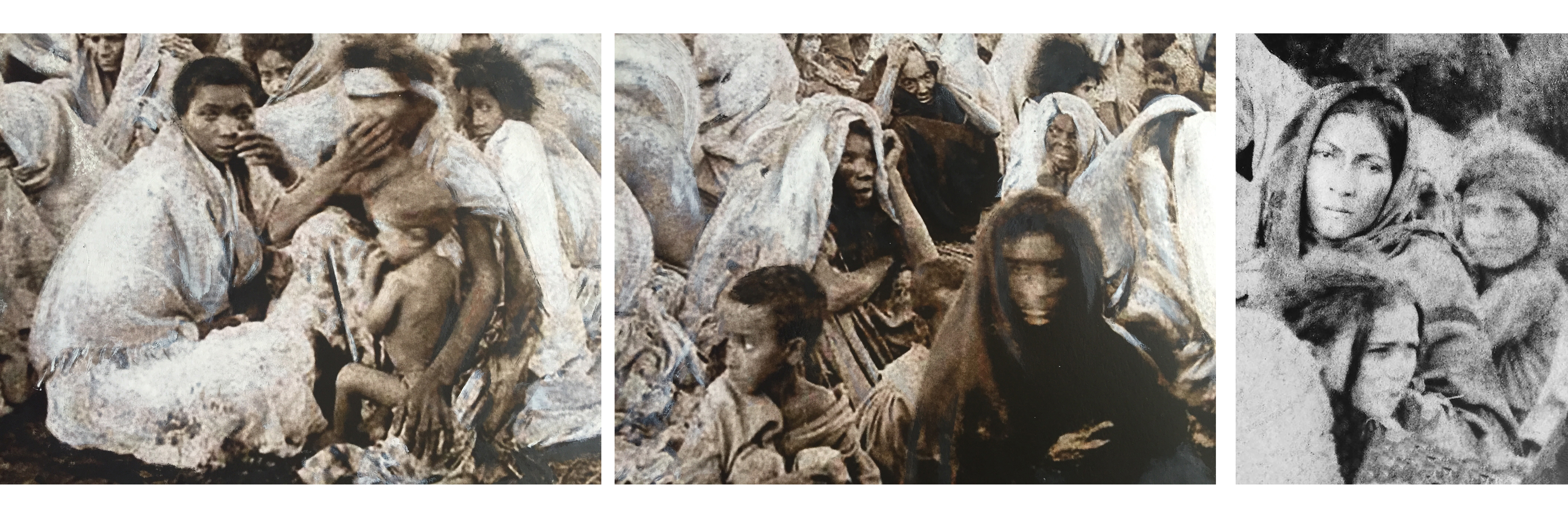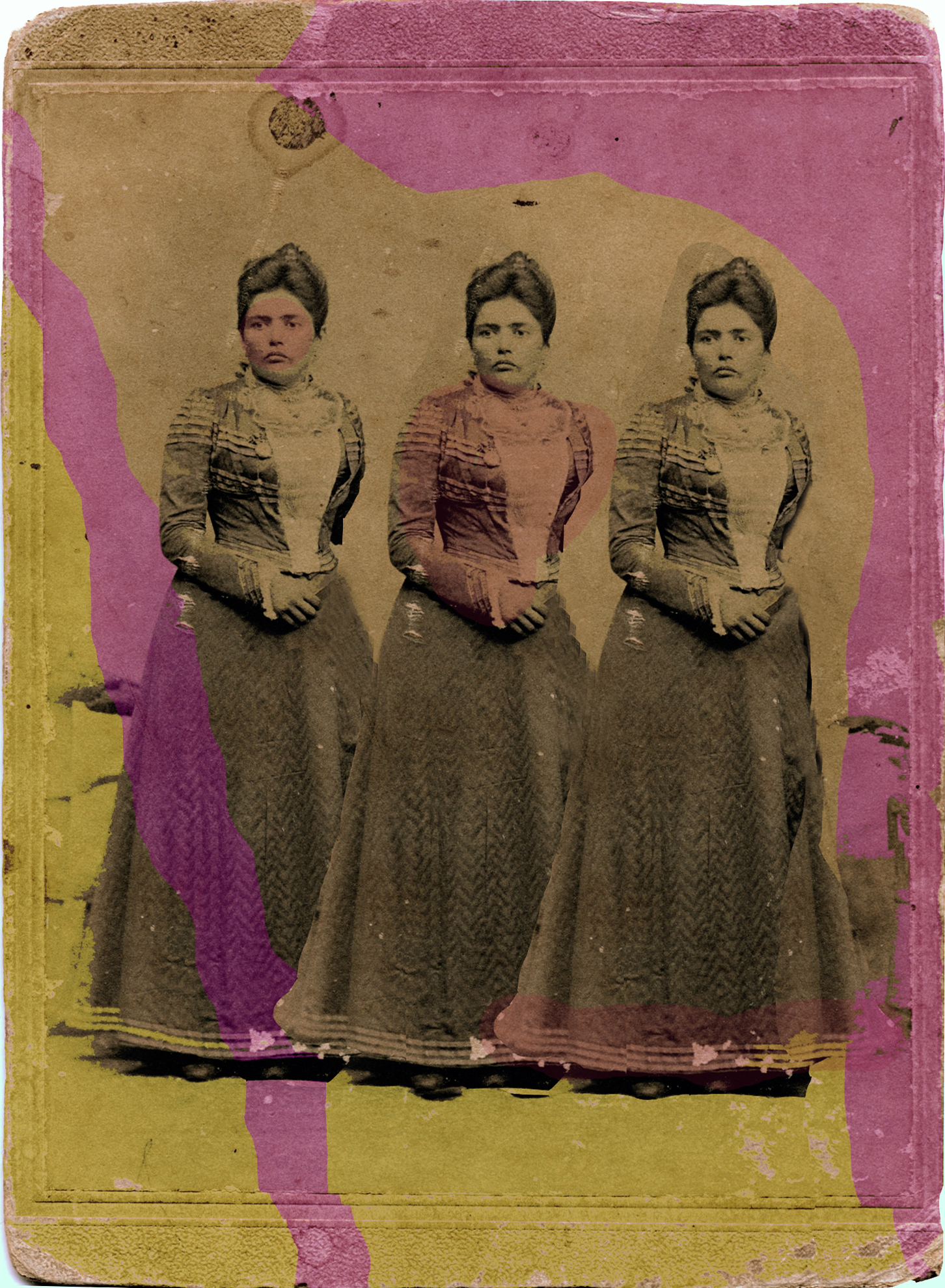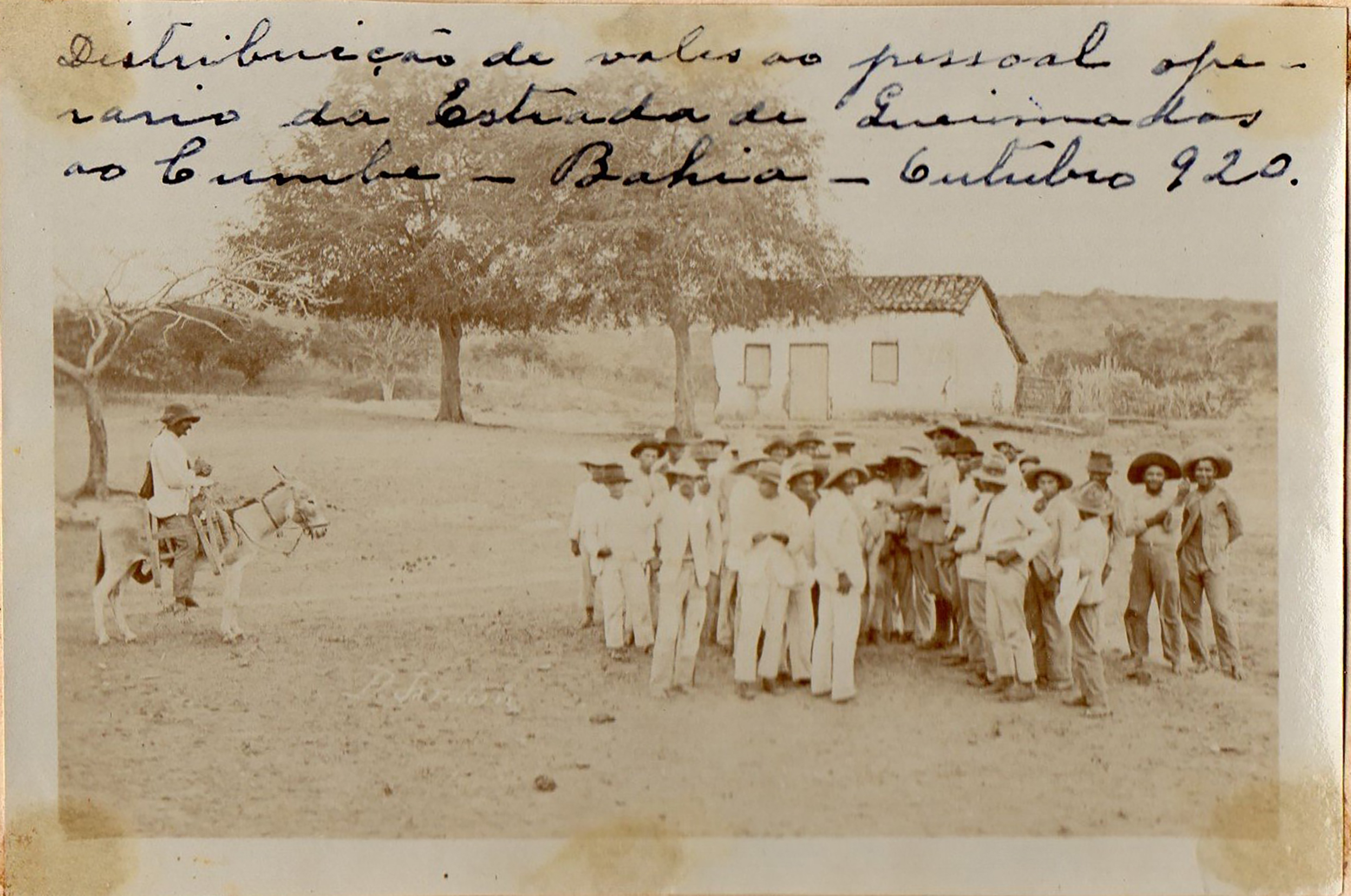STORIES WE HOLD (HISTORIAS QUE GUARDAMOS)
Photographs, documents, newspapers, books and objects
Research, lecture, projections, Installation
2010-2018
Photographs, documents, newspapers, books and objects
Research, lecture, projections, Installation
2010-2018

Modern women, archaic ventures -The early days of photography in the Sertão. Family photographs and forgotten memories. The invisible women of the Canudos’s war. The brief appearance of women in the canon of Brazilian literature, “Os Sertões”, and some considerations on the misogyny of the author, Euclydes da Cunha.
Research on photography & memory; an intersection between family stories, a seminal book of Brazilian literature (“Os Sertões” by Euclides da Cunha), and the dawn of photography in the “sertão”. The narrative is permeated by the attempt to identify traces of the female presence and make sense of their existence within the events.
_______________
PART 01. EARLY 19th CENTURY
EVE
The study focuses on my maternal village, Vila Bela de Santo Antônio das Queimadas, a rural community in the heart of the Bahia hinterland, in the 19th century. The region was first explored at the end of the 17th century, when the colonists, in pursuit of gold and land, infiltrated the territory and decimated the indigenous inhabitants.
Part of the large area called Sertão, which spans almost the entire interior of the Brazilian Northeast, the area was characterized by a dry climate with vast unproductive estates and the exploitation of peasant labour by landowners. This circumstance was further aggravated by the recent abolishment of slavery (1888), which resulted in the influx of millions of former slaves onto the streets.
Vila Bela de Santo Antônio das Queimadas was established around the year 1815, along the Itapicuru River, in the junction of two large farms owned by a woman, Dona Isabel Maria Guedes de Brito. After the death of her husband, the widow settled down with a sister in the farms. They are the first female characters in the story.
![]()
![]()
The study focuses on my maternal village, Vila Bela de Santo Antônio das Queimadas, a rural community in the heart of the Bahia hinterland, in the 19th century. The region was first explored at the end of the 17th century, when the colonists, in pursuit of gold and land, infiltrated the territory and decimated the indigenous inhabitants.
Part of the large area called Sertão, which spans almost the entire interior of the Brazilian Northeast, the area was characterized by a dry climate with vast unproductive estates and the exploitation of peasant labour by landowners. This circumstance was further aggravated by the recent abolishment of slavery (1888), which resulted in the influx of millions of former slaves onto the streets.
Vila Bela de Santo Antônio das Queimadas was established around the year 1815, along the Itapicuru River, in the junction of two large farms owned by a woman, Dona Isabel Maria Guedes de Brito. After the death of her husband, the widow settled down with a sister in the farms. They are the first female characters in the story.


Little is known about Dona Isabel, other than her Portuguese name and exclusive possession of those vast lands. However, it is not difficult to infer that she was a courageous pioneer in a rudimentary land. In order to begin a settlement, she made a portion of her land available to individuals who wished to establish a permanent residence there. Furthermore, she established a church dedicated to Saint Anthony, on the top of a hill, where the two women had a vision of the saint. The donation of land and the construction of a church were pivotal steps towards the settlement of the village.
Since photography did not exist in her time and there is no painting or drawing depicting her, we are unable to distinguish Dona Isabel's physical appearance. Regardless, I think of her as our Eva, the first female with a name in the region. Despite the lack of evidence that she was related to my family, I still hold her to be the initial documented ancestor of us, from the village. Nonetheless, it is in the undocumented Cariri people, whose historical records are absent, that lies the matrix ancestor of all of us.







1 - “Isabel” © Neyde Lantyer
2 - “Tatu” © Frans Post
3 - “Eve” © Neyde Lantyer
4, 5 - Neyde Lantyer. Appropriated from public archives
6- Neyde Lantyer. Appropriated from family collection
7, 8 - © Mornay. Bendengo Meteorite, 1816
9 - Appropriated from family collection
2 - “Tatu” © Frans Post
3 - “Eve” © Neyde Lantyer
4, 5 - Neyde Lantyer. Appropriated from public archives
6- Neyde Lantyer. Appropriated from family collection
7, 8 - © Mornay. Bendengo Meteorite, 1816
9 - Appropriated from family collection
________________
PART 02. LATE 19TH CENTURY
The most significant photographs taken in the region, in the 19th century, portrayed the “Battle of Canudos” (1896-1897), a political-religious movement near Vila Bela das Queimadas, which resulted in a huge bloodbath.
WAR
(...) The head of the movement, a man known as “the Counselor”, attracted thousands of peasants and former slaves to a place that became known as Canudos. In his preaching, a mix of religion, mysticism and revolt against misery, the Couselor promised salvation while casting apocalyptic prophecies about the end of the world, deflagrating a movement that became a menace to the supply of labor in the region. Ultimately, the movement emerged as a threat to the newly proclaimed Brazilian Republic (1889).
In response, the powerful landowners, together with the Catholic Church, which found itself threatened by the rebellious preaching of a layman, pressured the government to combat the movement, alleging rumors that Canudos intended to invade neighboring cities and leave for the capital.
![]()
![]()
(...) The head of the movement, a man known as “the Counselor”, attracted thousands of peasants and former slaves to a place that became known as Canudos. In his preaching, a mix of religion, mysticism and revolt against misery, the Couselor promised salvation while casting apocalyptic prophecies about the end of the world, deflagrating a movement that became a menace to the supply of labor in the region. Ultimately, the movement emerged as a threat to the newly proclaimed Brazilian Republic (1889).
In response, the powerful landowners, together with the Catholic Church, which found itself threatened by the rebellious preaching of a layman, pressured the government to combat the movement, alleging rumors that Canudos intended to invade neighboring cities and leave for the capital.

© D. Urpia. Canudos before the war.

© Flavio de Barros. Canudos after the last assault, 1897
War was declared. The Brazilian army dispatched the 1st expedition (600 men), then the 2nd (1,500 men) and the 3rd (2,500 men), and all three were defeated by the rebels, alarming public opinion in the large cities who demanded the annihilation of the annihilation of Canudos (25,000 inhabitants). The popular claim gave legitimacy to the massacre perpetrated by the 4th expedition (6,000 men), which finally defeated the revolt.
The war lasted a year and ended with 25,000 deaths, including 5,000 soldiers, plus the total destruction of Canudos.


From “Os Sertões”, Da Cunha, Euclydes.
PRISONERS
The photograph here below, taken by Flavio de Barros, dipicts the women prisoners at the aftermatch.
Even though the official documents hardly mention it, 2/3 of the population of Canudos were women, or about 16,000 individuals. Records say that only 300 women and children survived the war - and we can see them here, looking directly at the photographer. Unofficial reports give notice that they were taken to the capital, sold as slaves or prostitutes, and then disappeared without a trace.
What happened to them?
![]()
The photograph here below, taken by Flavio de Barros, dipicts the women prisoners at the aftermatch.
Even though the official documents hardly mention it, 2/3 of the population of Canudos were women, or about 16,000 individuals. Records say that only 300 women and children survived the war - and we can see them here, looking directly at the photographer. Unofficial reports give notice that they were taken to the capital, sold as slaves or prostitutes, and then disappeared without a trace.
What happened to them?

© Neyde Lantyer. Drawing on Flavio de Barros’s photograph, 2019

Drawing on Flavio de Barros’s photograph, details, 2019
THREE SISTERS

Mixed media on photograph, 2014
My maternal family was formed a few years before the war with a legendary story: the visit of three beautiful sisters to Vila Bela das Queimadas, Joaquina, Mariana and Isabel. They came from a neighboring village, accompanied by their father, for an evening of poetry and music by the local philharmonic orchestra.
Despite the region's cultural aridity, there were philharmonic orchestras performing on celebratory occasions and special gatherings for local families, as well as erratic poets willing to recite their poetry.
For some kind of wonder - or perhaps some previous arrangement - at the end of the visit the three of them were committed with three of the most prestigious local bachelors, three cousins among themselves. The weddings happened in the same day, a year later - two of the new couples, my maternal great-grandparents.
*Let’s not forget that getting married was absolutely important for a “woman of family”, valuating and giving her a place in society. And if the man was somehow powerful, her value raised in face of the community and in everybody’s eyes.
Despite the region's cultural aridity, there were philharmonic orchestras performing on celebratory occasions and special gatherings for local families, as well as erratic poets willing to recite their poetry.
For some kind of wonder - or perhaps some previous arrangement - at the end of the visit the three of them were committed with three of the most prestigious local bachelors, three cousins among themselves. The weddings happened in the same day, a year later - two of the new couples, my maternal great-grandparents.
*Let’s not forget that getting married was absolutely important for a “woman of family”, valuating and giving her a place in society. And if the man was somehow powerful, her value raised in face of the community and in everybody’s eyes.
EARLY 20TH CENTURY



OS SERTÕES
Five years after the Canudos bloodbath, Euclides da Cunha launched his masterpiece “Os Sertões”(1902), an immediate success and still considered a seminal book of the Brazilian literature and essential for understanding the country.
Euclides’s narrative was intensely visual to the point that some of his critics said that he was jealous of the photographer Flavio de Barros and his unique images of the episode, which I disagree. In my opinion, is the book - and not the photographs - that creates the mythological image of the “sertão” flagellated, dramatic and fatalistic, a Brazilian icon that - for then on - academics and artists have never ceased to look for.
Euclides’s narrative was intensely visual to the point that some of his critics said that he was jealous of the photographer Flavio de Barros and his unique images of the episode, which I disagree. In my opinion, is the book - and not the photographs - that creates the mythological image of the “sertão” flagellated, dramatic and fatalistic, a Brazilian icon that - for then on - academics and artists have never ceased to look for.

In the 1960’s Canudos was flooded by the Cocorobó dam.
THE FIRST PHOTOGRAPHS OF THE VILLAGE
1920-1922








Taken by Lindolfo Farias, the engeneer who travelled to the village to buid the road connecting Vila Bela das Queimadas to Cumbe (actual Euclides da Cunha city), between 1920 and 1922, these photographs are a rarity, from my grandfather’s archives. Their outstanding historic value have the merit to provide a rather rich chronicle of the village, giving a perspective into the local social relations in the early 20th century.
Looking at them, one can divise the signs of a “desenvolvimentist” wave that took the sertão in that very moment with the construction of roads and dams and other infra-sctructure to allow the access (and explotation) of that remote region.
Moreover, the photographs offer a glympse on several aspects of the life in the village, such as the movement at the reailway station, a church, a busy street market, a Protestant baptism in the river, a police case, a veteran of the Paraguay war and even a strike by the workers of the road, for lack of payment. Nonetherless, the collection of 40 images are a striking document of the historic work and class relations in the sertão, having also the merit to provide an overview on the bourgeois family life represented by a group of stylish children and two couples, one of them accompained by a black servant.
Looking at them, one can divise the signs of a “desenvolvimentist” wave that took the sertão in that very moment with the construction of roads and dams and other infra-sctructure to allow the access (and explotation) of that remote region.
Moreover, the photographs offer a glympse on several aspects of the life in the village, such as the movement at the reailway station, a church, a busy street market, a Protestant baptism in the river, a police case, a veteran of the Paraguay war and even a strike by the workers of the road, for lack of payment. Nonetherless, the collection of 40 images are a striking document of the historic work and class relations in the sertão, having also the merit to provide an overview on the bourgeois family life represented by a group of stylish children and two couples, one of them accompained by a black servant.
MODERN WOMEN
1920s-1930s

CECY SOUZA
Village teacher in the first decades of the 20th century. The first black girl to graduate from the Escola Normal.

ZULMIRA LANTYER
Suffragist and councilor; the first woman elected in the first elections in which women voted and were voted in the country (1936).

LOURDES NONATO MARQUES
The schoolteacher who, while still a young student, delivered the official speech to prominent intellectual Ruy Barbosa, visiting the village as a presidential candidate (1919).

(by several photographers)










THE HOUSE
The family house, known as Chalet Lantyer, is a monument built in French style, between 1900 and 1906.
